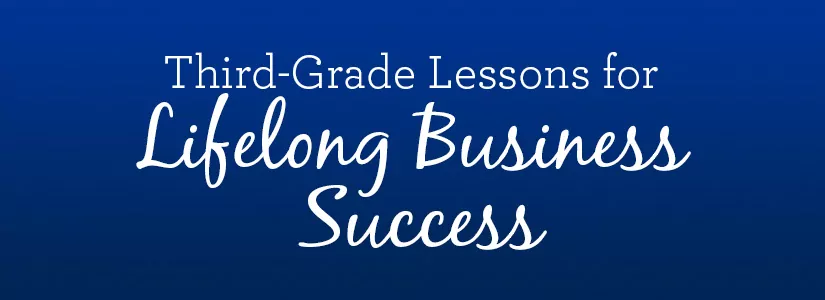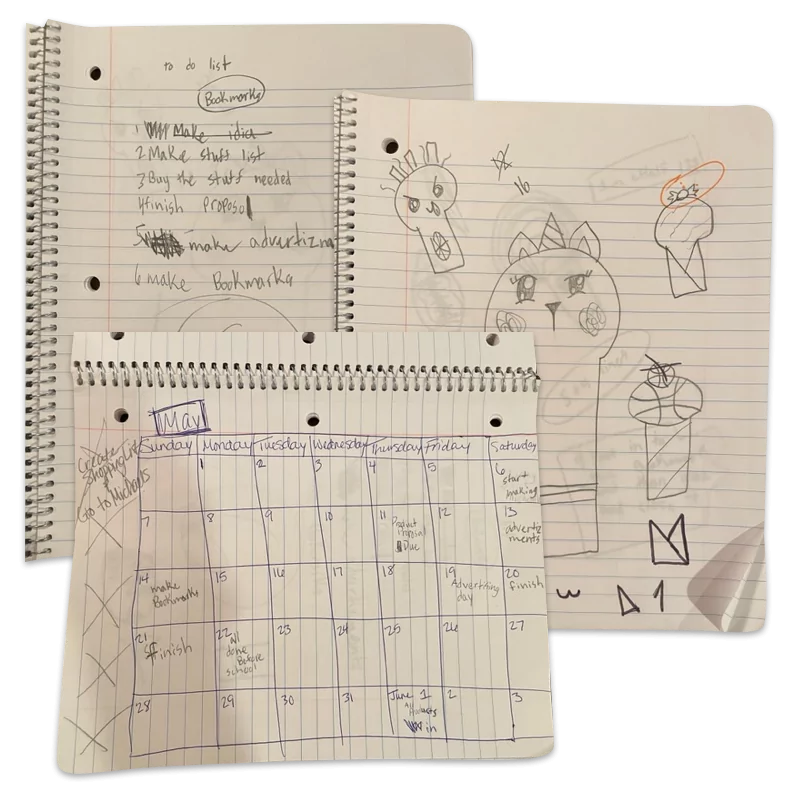
A few months ago, my husband and I barely got past the front door of our son’s house for dinner when our third-grade granddaughter excitedly told us about a project she was working on for school. The assignment was to create a product to sell to schoolmates in her elementary school and included creating:
- an overall business plan;
- a timeline for getting from assignment day to selling day;
- a product idea to make and sell;
- a plan to advertise the product;
- a plan on how to use the investment budget assigned;
- and, finally setting the product’s price to make a profit.
I have to admit I was completely blown away by the size, scope, and sheer complexity of this project for a third-grader. My husband and I, as well as our children, all did similar projects, but as part of a college business school curriculum!
My grandmotherly business instincts kicked in, and I was instantly prepared to check-in regularly in-person and via Face-Time with my granddaughter (Raya) during the five-week project. I wanted a front-row seat to track a third grader’s thinking and learning about each aspect of the assignment. If Raya and her classmates could accomplish this at the tender age of nine, think of how prepared they would be with the skills to build a successful future.
I asked Raya to share her plans with me. She couldn’t contain her excitement. She already knew that she wanted to sell bookmarks. While this was not surprising to me since Raya loves to read and doesn’t like turning down the corner of a page to mark her place, I asked her why she chose this product.
“Well, Nana, everyone can use a bookmark – boys and girls and teachers, too! I can make the same product with a different theme, like animals, sports, or rainbows,” she exclaimed.

Without missing a beat, she pulled out a spiral bound notebook, and matter-of-factly showed me her to-do list, her outline of a calendar timeline from May 1 (assignment day) to June 1 (business show/selling day), and sketched ideas of bookmarks.

Raya’s to-do list included everything from buying the stuff to writing a proposal and creating an advertisement. To figure out her stuff list, she started a list of the different themed bookmarks she wanted to make. With some curious questions from her parents, she quickly figured out her plan was a bit overly ambitious. She took a step back and thought through how to make different themes easily. She had an aha moment that all bookmarks should be made from the same template and have different art at the top to create different themes. She had figured out how to streamline her process.
Next, Raya had to figure out how many bookmarks she could make based on the budget she was provided. She had another aha moment when she realized (again with a few curious questions from her parents) that she could not use the entire budget on the product so she would have some budget for advertising and a display on selling day. Raya intently thought how many total bookmarks she could make and then used her newly acquired division skills to determine how many bookmarks of each theme she could make. Then it was time to layout out a timeline plan from purchasing product to creating the actual designs, making the product and sales materials and, finally, the display piece she would need for selling day. During those five weeks, she was hyper-focused on this project every day.
Today’s Third Graders, Tomorrow’s Workforce
I watched as Raya and her classmates used critical thinking skills that I believe will aid these students to reflect and understand process development and longer-term timeline planning. These skills will help these students figure out how to make sense of the world at a younger age, based on personal experience, observation, and understanding.
A study from the University of Chicago points out that “developing complex reasoning ability is particularly fundamental to the innovation and adaptive thinking skills necessary for a modern workforce”. There is no question in my mind that today’s business environment is complex, with a global economy, swift changes in technology, and the speed of unexpected business disruptors. The workforce of today and tomorrow therefore needs to be more prepared than ever to understand process and systems, flexibility, collaboration, and critical thinking.
If a successful workforce will need human judgment, creativity, intuition, and experience for reformulating strategies, these third graders are on their way toward becoming strong contributors to and leaders of tomorrow’s workforce.
If you need support today to strengthen your project planning to engage your team let’s start a conversation. Call 800-742-6800 or email today. For more information and tips for engaging stakeholders, sign up for our monthly newsletter.You can find our newsletter sign-up at askhillarys.com at the bottom right corner of the page.
